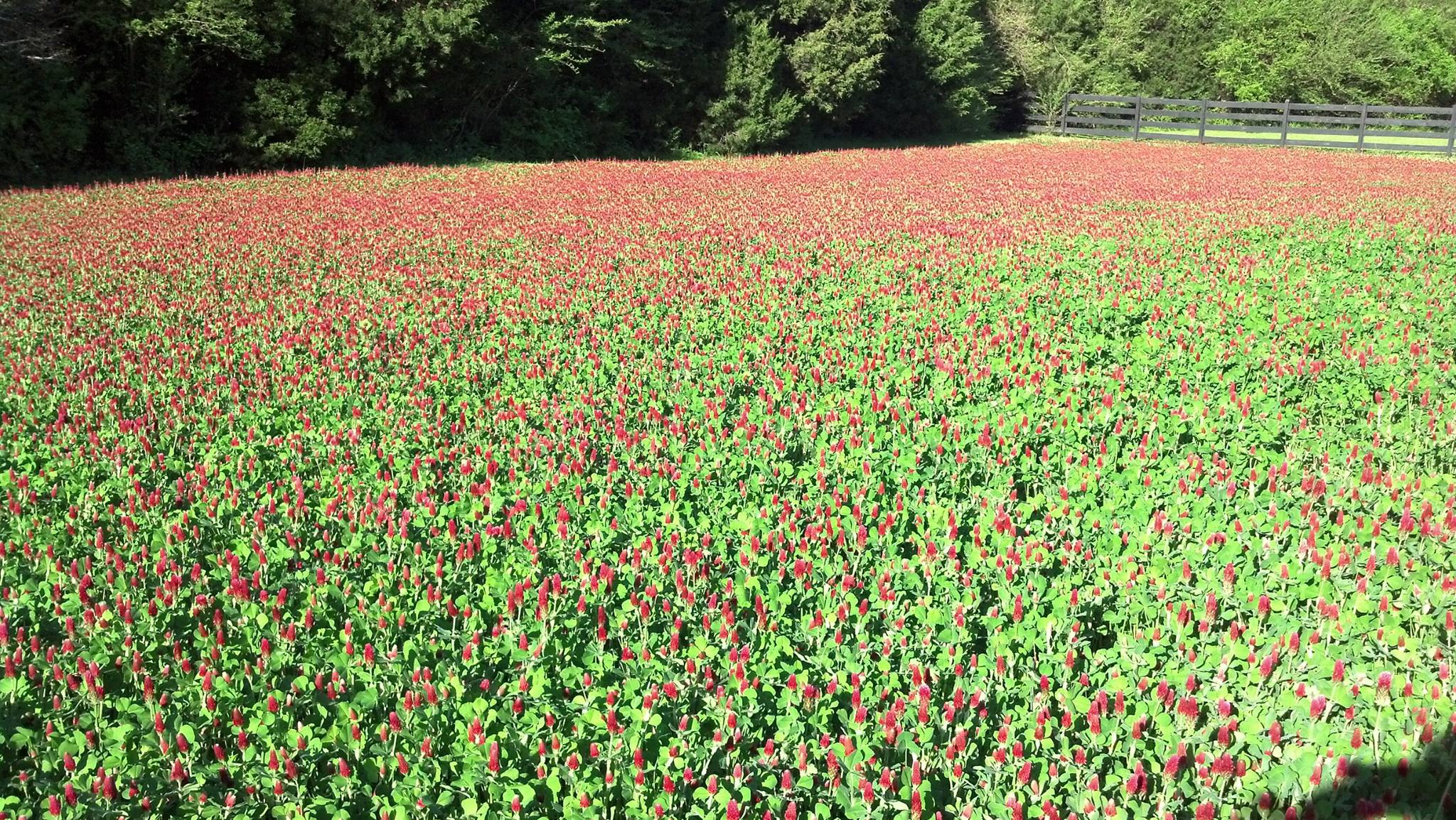
While bears may hibernate over winter, your garden soil shouldn’t!
In fact, leaving your soil dormant over winter does your spring garden no favors—it puts the soil at risk for erosion from winter rains, topsoil loss from high winds, and nutrient-deficiencies.
This is where you need to put to work cover crops—also called “green manure” because it adds organic matter (read: wonderful nutrients!) back into the soil.
At Stoney Creek Farm, we use Crimson Clover as a cover crop over the winter. During the fall season, we plant this over the entirety of our garden. Then, before the flowers come up in the springtime, we till the plants back into the soil, adding in great nutrient-rich organic matter!
Another benefit of cover crops that we’re sure anyone can dig (did you catch the pun?): it can help keep weeds in check.
Here are a few great cover crop options (or, cover “croptions” if we’re really pushing the puns today) to consider.
Crimson Clover
As I mentioned, Crimson Clover is our cover crop of choice at Stoney Creek Farm.
It grows quickly and forms a dense layer to keep weeds away over winter! It’s a great choice of cover crop throughout the southeast. Take a look at this map to see how Crimson Clover might do in your zone.
Plant Crimson Clover between 6 – 8 weeks before the average frost date in your area. Be sure to kill Crimson Clover early after it buds by tilling it directly into the soil.
You can even consider leaving a patch of clover through the springtime and summer to admire its beautiful red blossoms. These attract several beneficial insects, including bees, pirate bugs, and more!
Seeding dates in Tennessee: August – September
Learn more about Crimson Clover as a cover crop here.
Cereal Rye
Rye is an excellent choice in cover crop because it does well in just about all regions. It’s hardy, keeps weeds away, and can be sown later than other cover crop options. It also attracts beneficial insects like lady beetles!
Seeding dates in Tennessee: September – early November
Learn more about Cereal Rye as a cover crop here.
Winter Wheat
Winter wheat is inexpensive, easier to kill than some other cereal options (like rye), and is another cover crop option for a majority of the U.S. Wheat’s quick growth rate helps choke out weeds, and it has few pest threats.
Seeding dates in Tennessee: October – early November
Learn more about Winter Wheat as a cover crop here.
Hairy Vetch
While Hairy Vetch isn’t as widespread over the U.S. as some of the other cover crop choices, it is a popular choice in temperate and subtropical regions. And though its name sounds more like a hairy troll than a beautiful flower, Hairy Vetch blossoms into lovely purple blooms!
Seeding dates in Tennessee: August – September
Learn more about Hairy Vetch as a cover crop here.
Check out our video to see our Crimson Clover up close:
If you like this video and want to learn more sustainable living tips, be sure to follow our Stoney Creek Farm YouTube Channel!
More Resources:
- Cover Crops & Green Manures from UT Extension
- Cover Crop Quick Facts from UT Extension

